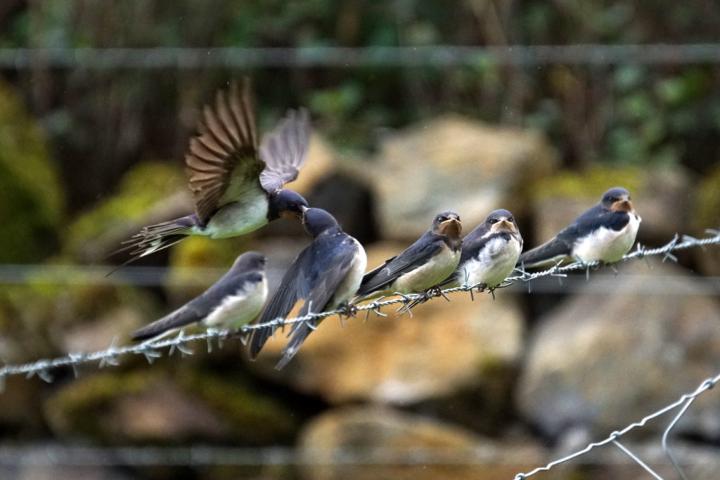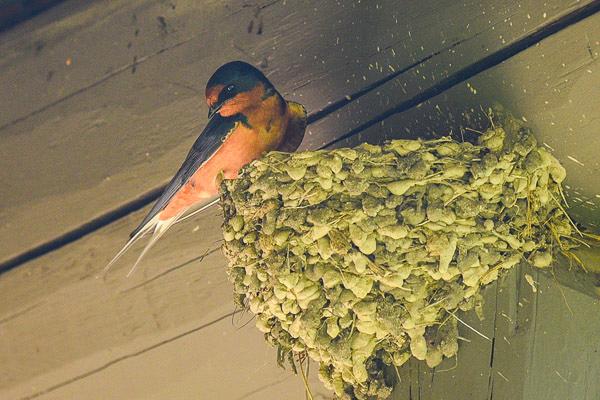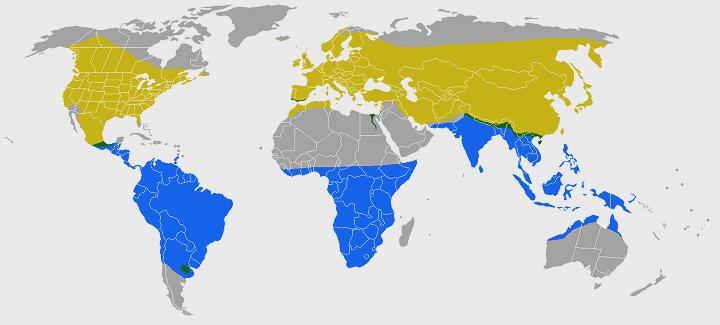 |
Canku Ota
|
 |
|
(Many Paths)
|
||
|
An Online Newsletter
Celebrating Native America
|
||
|
December 2018 - Volume
16 Number 12
|
||
|
|
||
|
Barn Swallows Have
Evolved To Live Alongside Us, New Research Reveals
|
||
|
by Alexandru Micu -
ZME Science
|
||
|
Barn swallows don’t
just live next to us — they’re probably alive today because
of us.
New research from the University of Colorado Boulder reveals that barn swallows (Hirundo rustica) — a species of bird that likes to live in bridges and sheds around the world — might be more intertwined with to us than previously thought. The paper explains that the barn swallow and its subspecies likely evolved alongside humans, as we were building our first settlements. Neighbours with benefits
“There’s very few studies that can point to the exact influence of humans, and so here, this coincidence of human expansion and permanent settlement and the expansion of a group that relies really, really heavily on humans is compelling.” Barn swallows are found throughout the northern hemisphere. They build mud-cup nests almost exclusively on human structures. Other than the fact that they originate in northern Africa, and that there are six barn swallow subspecies — which are have marked physical and behavioral differences — we don’t really know much about their evolution. Previous research suggested that the different subspecies split early, well before human settlement. The new study gave the issue a fresh look by analyzing the full genomes of 168 barn swallows. Individuals were selected from the two subspecies farthest apart on an evolutionary scale: H. r. savignii in Egypt (a non-migratory species that lives along the Nile) and H. r. erythrogaster in North America (a species found throughout North America that migrates seasonally to South America). The team employed more sophisticated computational resources and methods than were available for previous studies. This gave them a more complete picture of barn swallow speciation over time (i.e., when the subspecies separated). Their results suggest the process happened much closer to the point in time when humans began to build structures and settlements.
The findings — still preliminary — also suggest that the evolutionary link between humans and barn swallows was struck through a “founder event” — a situation which occurs when a small number of individuals is able to take over a new environment quickly due to abundant resources and an absence of competitors. For the swallows, the founder event may have occurred as they moved into a new, relatively empty environment: human settlements.
The paper “Demographic inference in barn swallows using whole-genome data shows signal for bottleneck and subspecies differentiation during the Holocene” has been published in the journal Molecular Ecology. |
||||
|
|
|
||
|
|
||
| Canku Ota is a free Newsletter celebrating Native America, its traditions and accomplishments . We do not provide subscriber or visitor names to anyone. Some articles presented in Canku Ota may contain copyright material. We have received appropriate permissions for republishing any articles. Material appearing here is distributed without profit or monetary gain to those who have expressed an interest. This is in accordance with Title 17 U.S.C. Section 107. | ||
|
Canku Ota is a copyright ©
2000 - 2018 of Vicki Williams Barry and Paul Barry.
|
||
 |
 |
|
|
The "Canku
Ota - A Newsletter Celebrating Native America" web site and
its design is the
|
||
|
Copyright ©
1999 - 2018 of Paul C. Barry.
|
||
|
All Rights Reserved.
|
||


